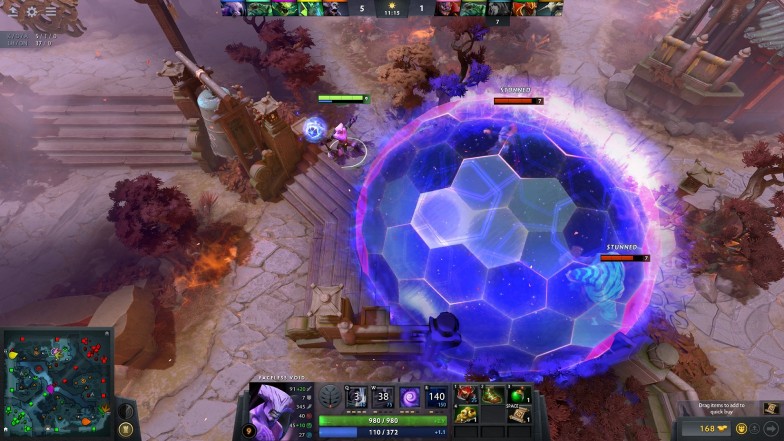In Dota 2, heroes have three main statistics that determine their scaling abilities. They are Strength, Agility, and Intelligence.
As a hero levels up, obtains talents, buys certain items or uses certain abilities, they gain attributes.
These attributes also benefit illusions. Understanding how these attributes work is crucial to mastering the game.
In this article, we’ll talk about how attributes work in Dota 2 and what you need to know to get even better at the game.
Primary Attribute

Each hero in Dota 2 has a primary attribute that modifies their main attack damage and heavily impacts their role and playstyle.
- Strength determines a hero’s toughness and endurance, increasing maximum health and health regeneration.
- Agility determines a hero’s swiftness and dexterity, increasing armor and attack speed.
- Intelligence determines a hero’s wit and wisdom, increasing maximum mana, mana regeneration, and magic resistance.
A hero’s primary attribute typically grows faster than the other two attributes.
Heroes with Strength as their primary attribute can be hard to kill and often take Initiator and Tank roles.
Heroes with Agility as their primary attribute tend to be more dependent on their physical attacks and items and often take Carry and Gank roles.
Heroes with Intelligence as their primary attribute tend to rely on their abilities to deal damage or help others and often take Support, Gank, and Pusher roles.
Knowing how these attributes work is crucial to mastering the game. By understanding the strengths and weaknesses of each attribute, you can better counter your enemy’s heroes and gain an advantage in battle.
Attribute Bonus

In Dota 2, every hero (except for Invoker) has access to an Attribute Bonus ability located within the Talent leveling menu.
This passive ability automatically levels up if nothing else can be leveled up at that level. It provides a bonus to Strength, Agility, and Intelligence of 2/4/6/8/10/12/14 per level.
This ability follows the upgrading restrictions of regular abilities per hero level, but this restriction is removed when the hero reaches level 10.
If all ability points are spent on their respective levels, this ability levels up automatically on levels 17/19/21/22/23/24/26.
Each level of the Attribute Bonus ability grants 2/4/6/8/10/12/14 main attack damage to all heroes, as well as boosts to health, health regeneration, attack speed, armor, mana, and mana regeneration.
These bonuses can provide a significant boost to a hero’s overall power and survivability.
Increasing Attributes with Items

In Dota 2, each attribute has its own set of items that focus on boosting it. These items are categorized into different sections based on the amount of attribute boost they provide, which are Small, Medium, Large, and Ultimate.
Small items boost their associated attribute by 3 or all attributes by 1 and are often taken as starting items to make up for gaps in a hero’s statistics.
Medium items boost their associated attribute by 6 or all attributes by 2 and are usually components of many midrange items.
Large items boost their associated attribute by 10 or all attributes by 4 and are usually components in more powerful items.
Ultimate items boost their associated attribute by 25 or all attributes by 10 and are mostly used to make late game items due to their high cost.
In addition to these items, there is also the Ghost Scepter which boosts all attributes by 5. All other items that grant attributes are upgrades derived from one or multiple of these basic items.
Countering Heroes Based on Attributes

In Dota 2, understanding how attributes work is crucial to countering enemy heroes.
Each attribute has its own strengths and weaknesses, and knowing how to exploit these can give you an advantage in battle.
Strength heroes can handle burst damage better and tend to be a good answer against Intelligence heroes who depend on their skills for extra damage.
To counter a Strength Carry hero, consider a hero with high armor and high damage per second.
Agility heroes don’t have a lot of HP and can be bursted by Intelligence heroes.
To counter an Agility Carry/DPS hero, consider using a hero that can outburst them.
Intelligence heroes tend to rely on their abilities to deal damage or help others.
To counter an Intelligence Carry hero, use beefier heroes who can survive their burst damage. Strength heroes usually fall under this category.
Ultimately, the key to countering enemy heroes based on their attributes is to understand their strengths and weaknesses and use this knowledge to your advantage. By choosing the right abilities, items, and strategies, you can gain an edge in battle and come out on top.






